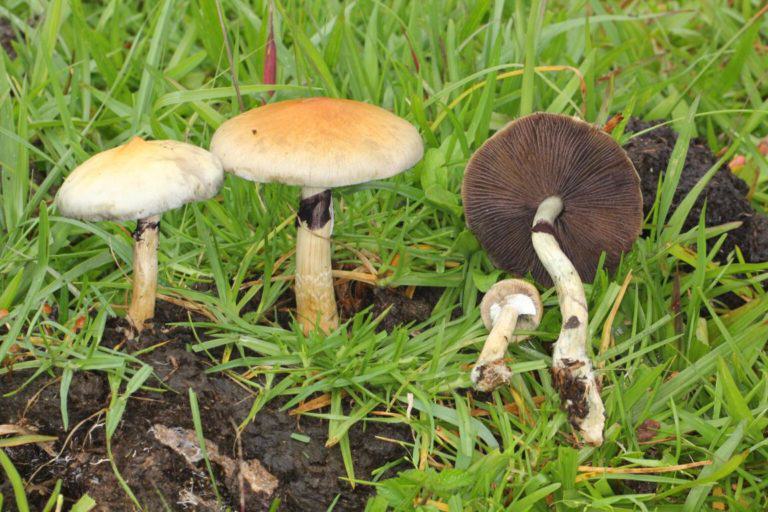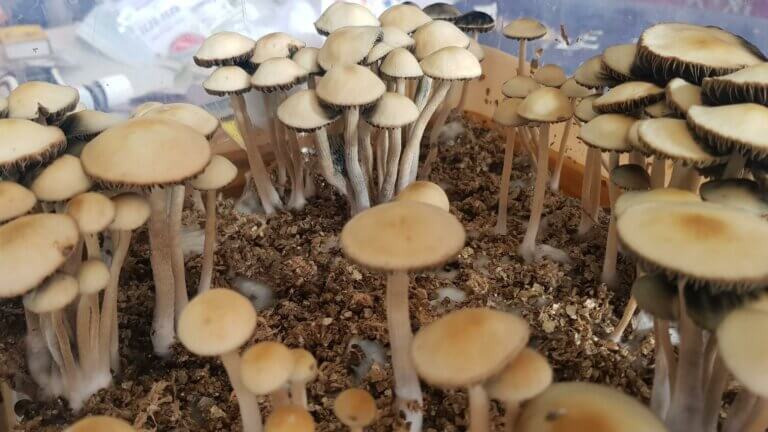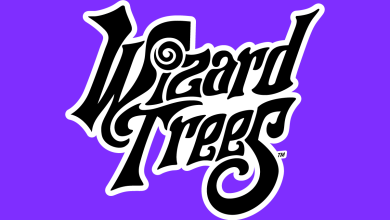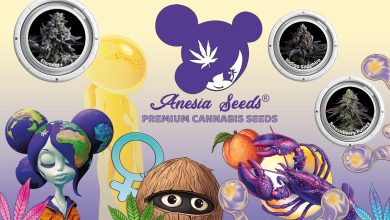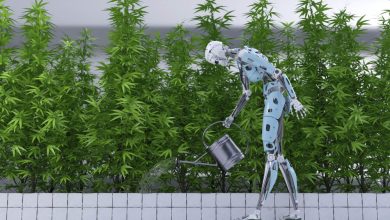Types of magic mushrooms- Alchimia Grow Shop
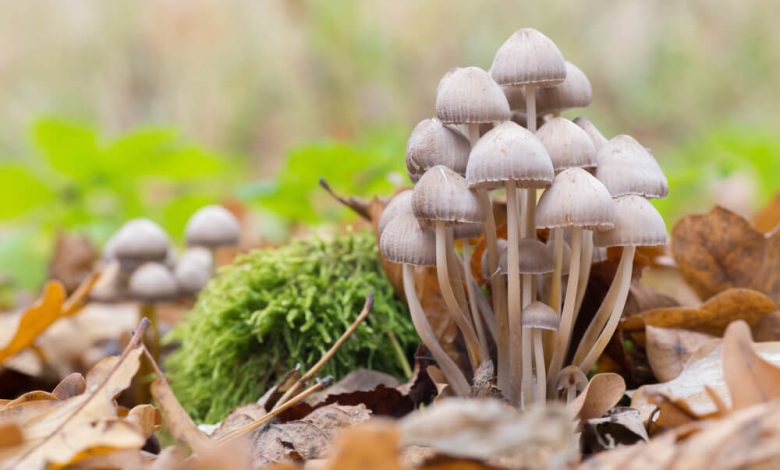
Welcome, psychonautics and lovers of mycological exploration! If you are here, it is probably because you are passionate about the fascinating world of so-called magic or hallucinogenic mushrooms and their psychoactive effects. Or you may simply be curious to learn more about the different species that cause these interesting effects. Be that as it may, today we want to talk to you about the different types or species of mushrooms with psychoactive properties. What substances cause these effects? What types of mushrooms contain them?
In this article, we invite you to discover the answers to these questions about magic mushrooms, which, as you know, can take you to experiences beyond the ordinary thanks to the psychoactive compounds they contain. From the legendary Psilocybe to the mysterious Amanitas, let’s explore together the wonders of nature offered by these small but powerful travel companions. Get ready to enter a world of discoveries and psychedelic emotions!
Hallucinogenic mushrooms and psychoactive compounds
Probably, the best-known compounds produced by the different types of magic mushrooms are psilocybin and psilocin, an alkaloid derived from the former. Indeed, these two molecules are responsible for the effects on the body and mind of this type of mushroom, also known as psilocybin mushrooms, although they are not the only ones present in the different species of mushrooms that cause this type of effects (it is estimated that there are more than 200 species with psychoactive effects). Broadly speaking, the most studied psychoactive compounds in these mushrooms are the following:
- Psilocybin: This compound is the most common in hallucinogenic mushrooms and is responsible for their psychedelic effects. It is converted to psilocin in the human body.
- Psilocin: This is another key compound found in magic mushrooms and contributes to their hallucinogenic and psychedelic effects.
- Baeocystin: This compound is structurally similar to psilocybin and also contributes to the psychoactive effects of hallucinogenic mushrooms.
- Norbaeocystin: It is a metabolite of psilocybin that may be present in some species of magic mushrooms and contribute to their effects.
- Ibotenic acid/Muscimol: Although less common than psilocybin, muscimol is the psychoactive compound present in mushrooms of the Amanita genus, such as the popular Amanita muscaria. It produces hallucinogenic and sedative effects on the human body.
Many of the magic mushrooms you know have different amounts of these compounds, or may not produce some of them, but if the mushrooms have psychoactive effects it is more than likely that they come from one of these substances, or from a combination of some of them.
What is Psilocybin and what are its effects?
After decades of neglect, psilocybin is nowadays the subject of dozens of studies and clinical trials all over the world, showing especially promising results in the treatment of conditions like depression or anxiety. In addition to its well-known properties in recreational or spiritual contexts, the news regarding its possible medicinal properties further adds to the interest to this compound.
Types of magic or hallucinogenic mushrooms
Normally, the types of hallucinogenic mushrooms with psychoactive properties are divided into 3 large groups, within each of which there are different species. Below we leave you a summary of each of the 3 groups and the most popular species within each of them:
Mushrooms with psilocybin and psilocin
If you are a reader of our blog, you surely know our articles about these two alkaloid compounds, so popular today thanks to the rise in the use of this type of mushrooms in various medical trials and treatments, whether we talk about the popular microdoses of psilocybin or as therapies based on high doses of this substance. These are some of the species and genera that contain these compounds, which as we have already seen are usually combined with others such as baeocystin and norbaeocystin.
Psilocybe
This genus includes many species of hallucinogenic mushrooms, known for their psilocybin and psilocin content. They usually have a conical or convex hat and a thin stem. They are found throughout the world, preferably in humid areas with abundant organic matter. Species such as Psilocybe cubensis are common in tropical and subtropical regions, while Psilocybe semilanceata is found in grasslands in temperate climates. Over the last decades, many hybrids have been developed between different species of psilocybes, such as Penis Envy, White Rabbit or Jack Frost.
- Psilocybe cubensis: Also known as “magic mushrooms” or “cubensis”, they are one of the most common and widely cultivated varieties of psilocybe mushrooms. If you’ve ever tried one, it’s probably one of them.
- Psilocybe semilanceata: Known as “pointed cap mushrooms” or “liberty caps”, they are small and grow in grasslands in many parts of the world.
- Psilocybe azurescens: They are a species of hallucinogenic mushrooms that grow naturally in coastal regions of the Pacific Northwest, especially in sandy areas near the ocean.
- Psilocybe mexicana: Native to Mexico, they are one of the first species of psilocybe mushrooms discovered and have been used in sacred rituals for centuries by the indigenous cultures of the region.
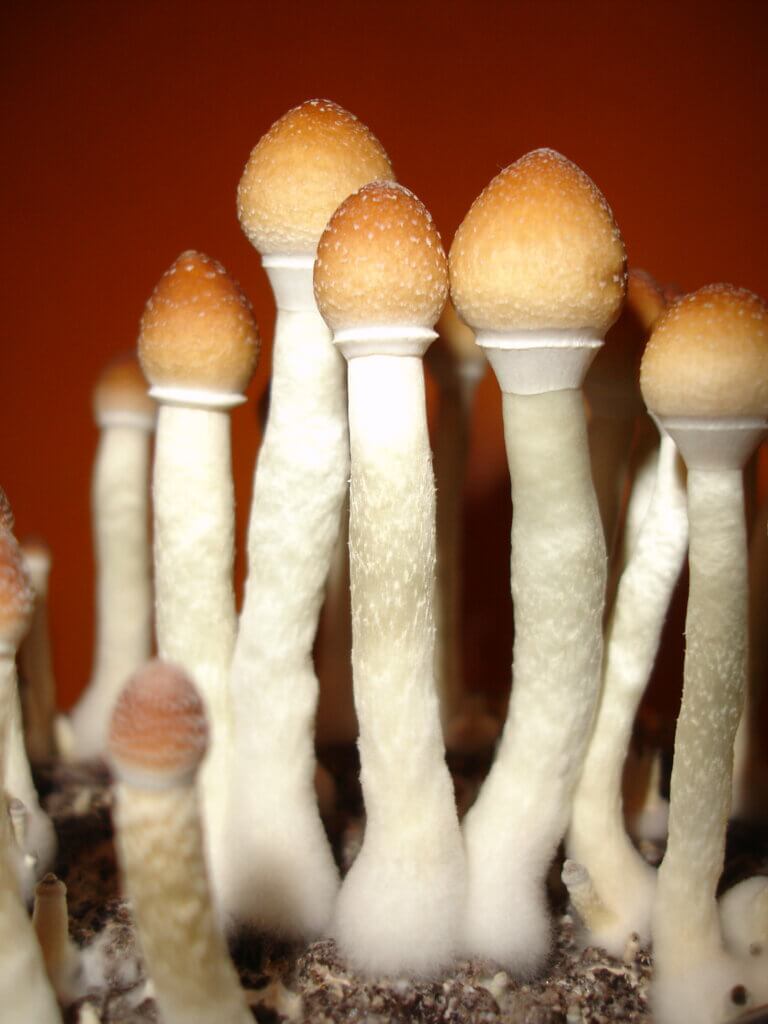
Panaeolus
Mushrooms of this genus usually have a conical to convex cap and a cylindrical, fibrous stem. Some species contain psilocybin and psilocin, such as Panaeolus cyanescens and Panaeolus tropicalis. These mushrooms grow in a variety of habitats, including grasslands, prairies, agricultural fields, and livestock manure. Species such as Panaeolus cyanescens are common in warm, tropical climates.
- Panaeolus cyanescens: Often called “Copelandia”, this mushroom is known for its high potency and ability to produce intense psychedelic experiences. They are usually found in areas with warm climates.
- Panaeolus cambodginiensis: Similar to Panaeolus cyanescens, this variety is found in Southeast Asia and is also known for its hallucinogenic potency.
- Panaeolus tropicalis: They have a conical or convex hat that is brown to dark brown in color, with a diameter that can vary between 1 and 5 centimeters. The stem is thin and fibrous, with a color that ranges from white to darker tones. It is mainly found in tropical and subtropical regions around the world.
Differences between Panaeolus Cyanescens (Hawaiian Copelandia) and Psilocybe Cubensis
Most varieties of hallucinogenic mushrooms currently on the market come from of Psilocybe cubensis. In this article we compare this variety with Panaeolus Cyanescens (or Copelandia), which has been gaining a reputation for all the mycologists who discover it due to its Psilocybin content. This is 4 times more powerful than that of any Psilocybe Cubensis or similar. Homegrower mycologist, welcome to a new tomorrow.
Gymnopilus
These hallucinogenic mushrooms have a convex to flat cap and a color that varies from orange to brown. They contain psilocybin in much smaller quantities than we have seen so far and sometimes traces of psilocin. They are usually found in temperate and subtropical forests, as well as grassland areas. Species such as Gymnopilus spectabilis are common in North America and Europe, while others are found in tropical and subtropical regions.
- Gymnopilus spectabilis: It has an orange-to-brown cap with a convex center and a wavy margin. The blades are yellow and the foot has a ring that can be orange to yellow. It is found on tree stumps and decaying wood in coniferous and hardwood forests. It contains traces of psilocybin but is not considered a major source of psychoactive compounds.
- Gymnopilus aeruginosus: It has an orange-brown cap with a convex center and a wavy margin. The blades are orange to rust in color and the foot is the same color with a bluish base. It is mainly found in coniferous and hardwood forests. Contains traces of psychoactive compounds, such as psilocybin.
- Gymnopilus luteus: It has a yellow to brown cap with a smooth and slimy surface in wet conditions. The blades are yellow and the foot has a distinctive ring. They are usually found on tree stumps or decaying wood in mixed and coniferous forests. Traces of psilocybin have been found in some species, but it is not considered a major source of psychoactive compounds.
- Gymnopilus viridans: It has a yellow-orange to brown cap with a slimy surface in wet conditions. The blades are yellow and the stem may have greenish tones. It usually grows on tree stumps and decaying wood in coniferous and hardwood forests. Like other Gymnopilus species, it may contain traces of psilocybin, but in lower concentrations.
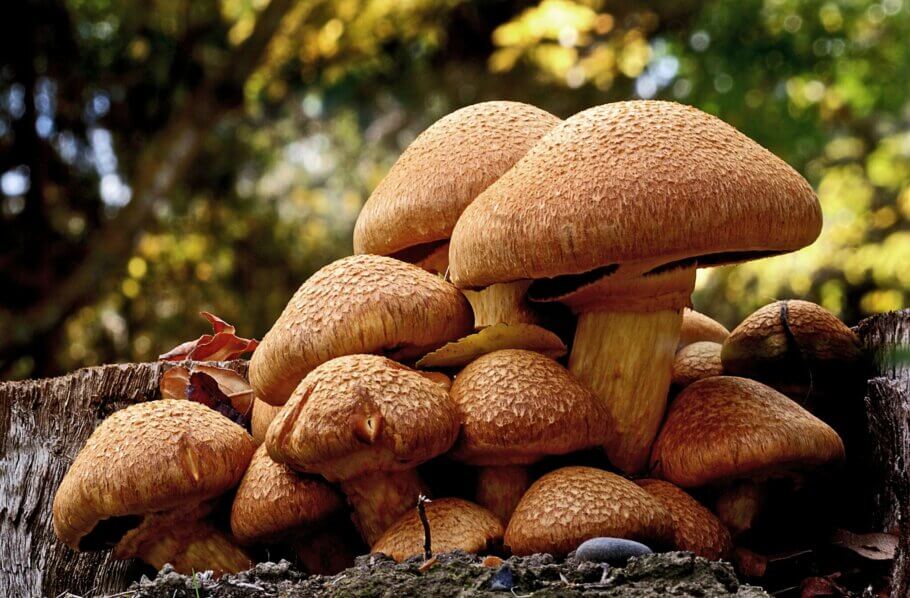
Pluteus
They are small to medium-sized mushrooms, with a convex to flat cap and a cylindrical stem. Some species contain psilocybin in trace amounts. Pluteus salicinus is a common species in this genus. These mushrooms usually grow on dead wood or soil rich in organic matter. They are common in deciduous and mixed forests in temperate and subtropical regions.
- Pluteus salicinus: Features a light brown to dark brown cap with a convex center and a lighter margin. The blades are white and the foot may have brown tones. It usually grows on decaying wood of deciduous trees, especially willows. The presence of psilocybin has been reported in this species, although in very low quantities.
- Pluteus atricapillus: It has a dark brown to black cap with a convex center and a wavy margin. The blades are white and the stem can be brown to black. It is found in decaying wood of deciduous trees, especially in mixed forests. Some reports suggest the presence of psilocybin in this species, but it is not considered a major source of psychoactive compounds.
- Pluteus cyanopus: Features a light brown to reddish brown cap with a convex center and lighter margin. The blades are white and the foot has a greenish-blue tone at the base. It is found in decaying wood of deciduous trees, such as oaks and beeches. Some studies have suggested the presence of psilocybin in this species, although in very low concentrations.
In addition to these genera, there are others that can also present small amounts of psilocybin and psilocin in some of their species:
- Hypholoma
- Inocybe
- Knowcybe
- Panaeolin
- Gerronema
- Agrocybe
- Galerina
- Mycena
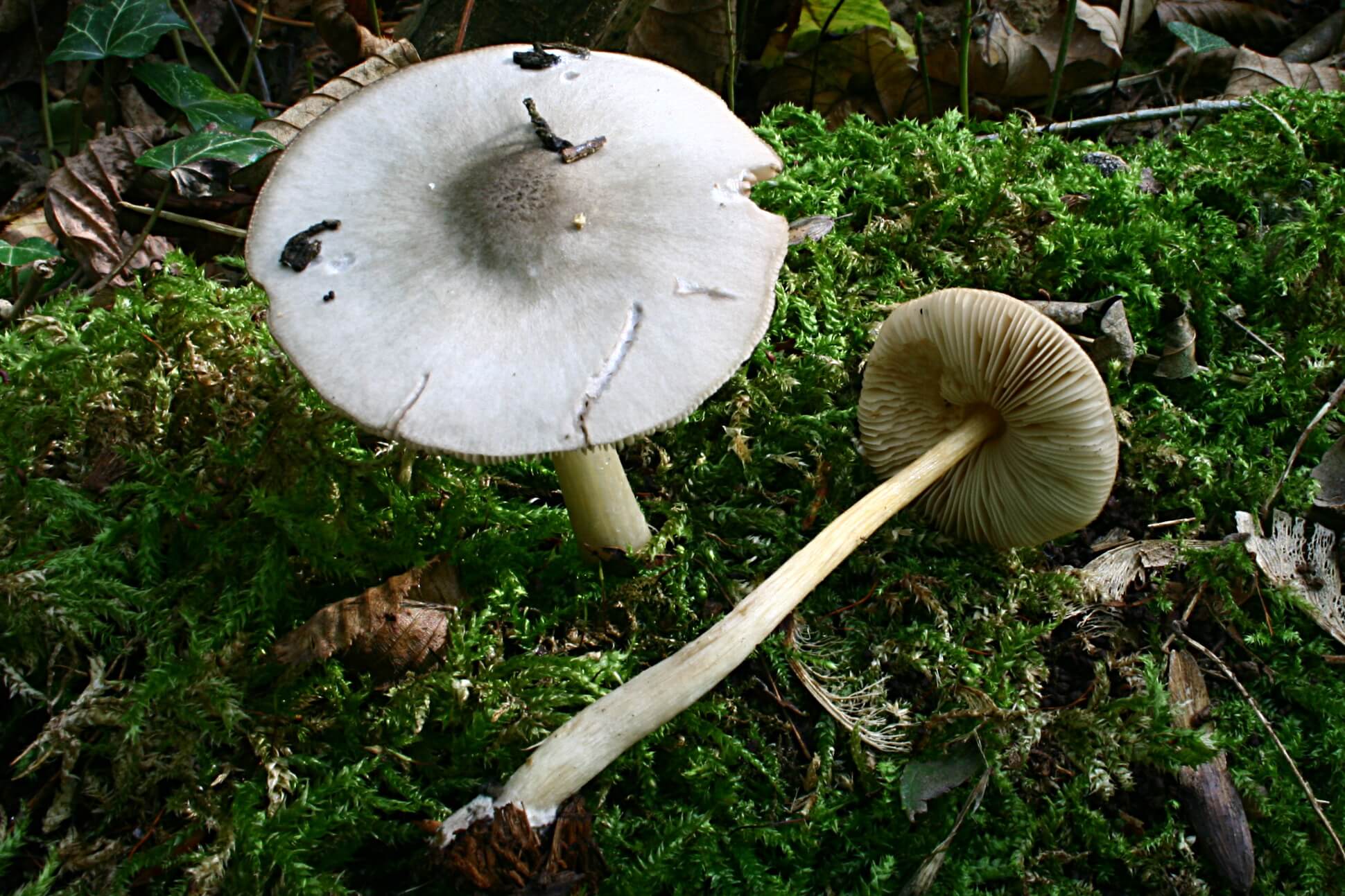
Mushrooms with ibotenic acid (muscimol)
The Amanita mushroom genus is one of the most well-known and recognizable groups within the mycological kingdom. These mushrooms typically have convex to flat-shaped caps, with a distinctive edge called a “volva,” which is a bag-like structure surrounding the base of the stem. Many species have bright, striking colors, such as white, yellow, red, or orange, making them easily identifiable.
Among the best-known species of the Amanita genus is the Amanita muscaria, also known as the fly swatter, which has a red cap adorned with white spots and a white, bulbous foot. Another notable species is the Amanita phalloides, known as “green oronja” or “the death mushroom”, due to its high toxicity.
Many species of Amanita are highly toxic and can cause serious illness and even death if consumed. Amanita phalloides is one of the deadliest mushrooms known and is responsible for the majority of mushroom poisoning deaths worldwide. Despite their toxicity, some Amanita species, such as Amanita muscaria, contain psychoactive compounds such as muscimol and ibotenic acid, which can produce hallucinogenic and entheogenic effects when consumed in adequate doses.
- Amanita muscaria: Also known as the “Mario Bros mushroom” due to its similar appearance to the Mario games. It contains hallucinogenic substances such as ibotenic acid, which once ingested is decarboxylated into muscimol.
- Amanita pantherina: Similar to Amanita muscaria, it contains muscimol and other hallucinogenic compounds. It has a distinctive appearance with a brown cap and white spots. The psychoactive effect is extremely powerful.
- Amanita muscaria var. formosa : A variant of the Amanita muscaria found primarily in North America. It also contains muscimol and ibotenic acid.
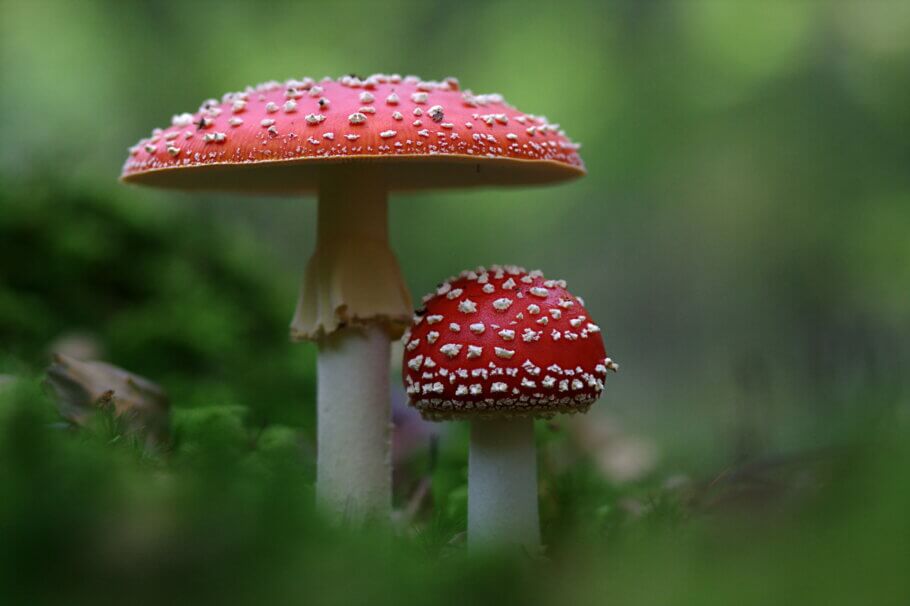
Parasitic mushrooms
Parasitic mushrooms are those that obtain their nutrients from living organisms, generally from plants or trees, although they can also be insects or other arthropods, to which they cause damage or disease. These mushrooms are capable of invading the tissue of their host and extracting the nutrients they need to grow and reproduce.
Unlike saprophytic mushrooms, which feed on dead organic matter, parasitic mushrooms depend on the presence of a living host to survive, establishing a symbiotic relationship that can be harmful to the affected plant or tree, as it can weaken its immune system, reduce its ability to obtain nutrients and water from the soil, and even cause its death in severe cases, as often happens in the case of host insects.
- Claviceps purpurea or ergot: Yes, you are right, it is the fungus that led to LSD at the hands of Albert Hofmann. It is a parasitic fungus that, as its name indicates, mainly infects rye crops and other grasses. The fungus produces sclerotia, survival structures that contain the spores thanks to which the fungus overwinters. In spring, when conditions are suitable, the fungus spores are released into the air. In addition to its negative effects on human and animal health, Claviceps has also been studied for the chemical compounds it produces, some of which have interesting pharmacological properties. For example, lysergic acid (LSA) present in ergot is a precursor to lysergic acid diethylamide (LSD), one of the best-known psychedelic drugs.
As you can see, the world of psilocybin mushrooms is as vast as it is interesting, with dozens of different species producing compounds such as psilocybin or psilocin (although as you have seen, not only these substances produce psychoactive effects). From here we encourage you to continue your study of these mushrooms and their unique properties, we are sure that you will discover a very exciting world!
References:
- Extensive Collection of Psychotropic Mushrooms with Determination of Their Tryptamine Alkaloids , Klára Gotvaldová, Jan Borovička, Kateřina Hájková, Petra Cihlářová, Alan Rockefeller, Martin Kuchař
- Hallucinogenic mushrooms, Dagmara Reingardiene, Jolita Vilcinskaite, Robertas Lazauskas
- The occurrence of psilocybin in Gymnopilus species, GM Hatfield, LJ Valdes
- Levels of psilocybin and psilocin in various types of mushrooms, J Stríbrný, Jan Borovička, M Sokol
The articles published by Alchimiaweb, S.L. are reserved for adult clients only. We would like to remind our customers that cannabis seeds are not listed in the European Community catalogue. They are products intended for genetic conservation and collecting, in no case for cultivation. In some countries it is strictly forbidden to germinate cannabis seeds, other than those authorised by the European Union. We recommend our customers not to infringe the law in any way, we are not responsible for their use.
